HCC students experience dangers of distracted driving
Posted: Friday, September 12, 2014 7:00 am | Updated: 9:09 am, Fri Sep 12, 2014.
by CJ Lovelace
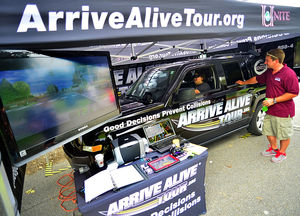
Behind the wheel with cellphones in hand, Hagerstown Community College students on Thursday were swerving all over the road, getting into accidents, running red lights and hitting pedestrians.
Thankfully, no one got hurt because it was part of a driving simulation hosted by UNITE International on its Arrive Alive Tour that has been traversing the nation in an effort to raise awareness about the dangers of distracted driving.
Team leader Patrick Sheehy — who was handing out “citations” to each student after taking part in the simulated distracted driving exercise — said about 80 percent of accidents on the road are caused by some kind of distracted driving.
“I think a lot of people realize that drinking and driving is extremely dangerous and illegal, but don’t take the time to think that the cellphone in their hand could potentially be even more dangerous,” Sheehy said. “For every alcohol-related accident on the road today, you’re looking at about four texting and driving accidents.”
From 2008 to 2012, an average of 250 people died each year in Maryland due to distracted driving crashes and 30,000 more were injured, according to the Maryland Motor Vehicle Administration, which points to the increased use of handheld electronic devices as a major culprit.
At any given time throughout the day in America, roughly 660,000 drivers use cellphones or other electronic devices while driving, according to national data.
Groups of students — some interested to try the simulator and others just looking to see what was going on — gathered around the UNITE’s setup on campus just outside the student center, where they had a car fitted with sensors for the gas and brake pedals and steering wheel.
Students donned virtual reality headgear, which looked similar to sunglasses, and took turns driving. Onlookers could see what the drivers saw on two monitors set up outside the car.
After driving for about 30 seconds, students were told to take out their cellphones and send a simple message.
“As they’re texting, you see the basic things you expect to see — lane drifting, slowing way down, speeding way up, perhaps running red lights, and then the worst-case scenario, being in an accident or hitting a pedestrian,” Sheehy said.
More than 100 students signed the group’s pledge to refrain from texting and driving, for which they received some freebies like T-shirts and wristbands to help spread the word, he said.
The tour stop, which heads to Spotsylvania, Va., for a community event today, was a jointly supported by the college, Meritus Health and the MVA.
C.J. Lovelace is a reporter for The Herald-Mail. He can be reached via email at cj.lovelace@herald-mail.com.

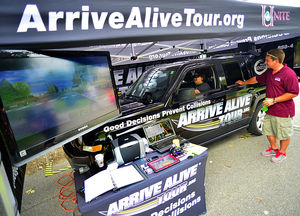
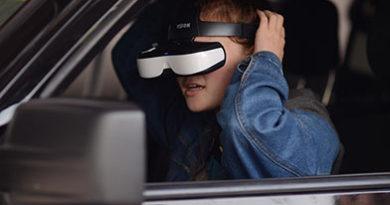
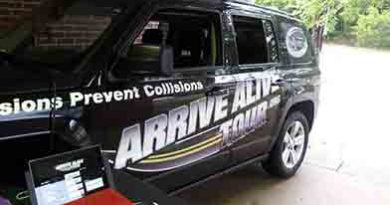
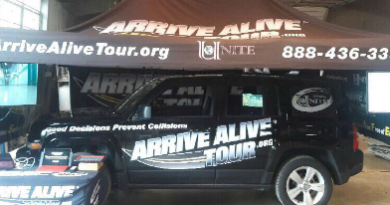
You must log in to post a comment.